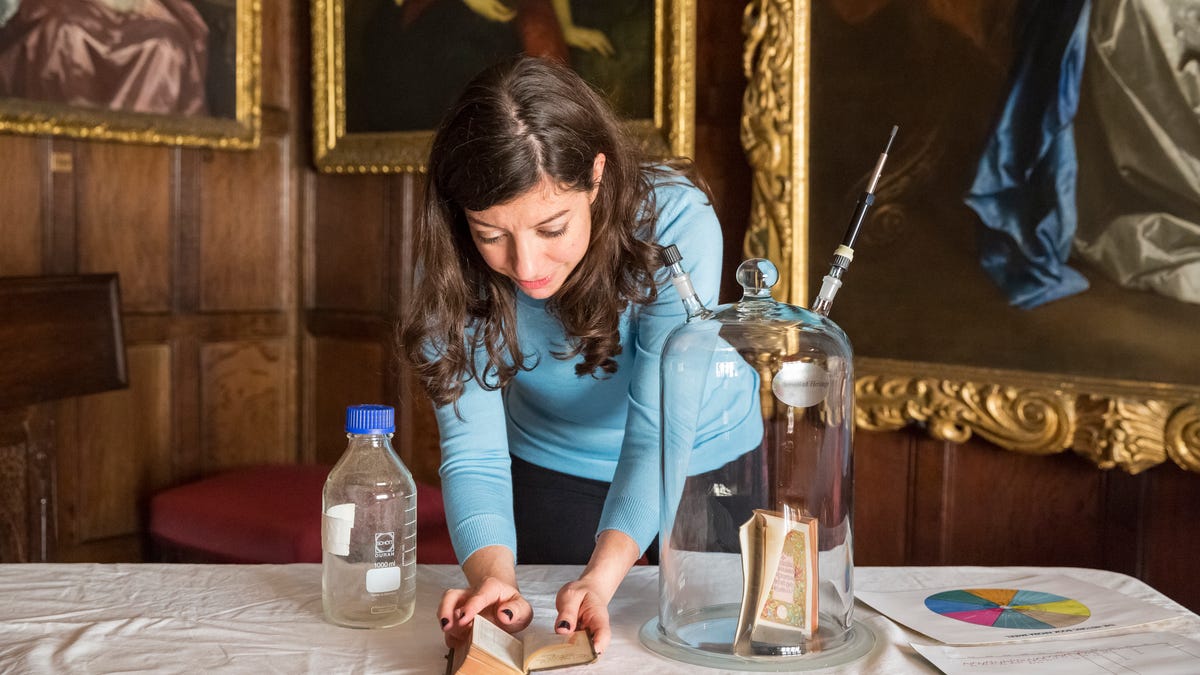Sniffing history: Pungent scents of the past come to life
Volunteers lend their noses to catalog the smell of old books and help us connect to our past. Ah, the delicate bouquet of rotten socks and mothballs.
Imagine visiting a museum exhibit depicting the London of Charles Dickens. You might encounter photos of carriages on cobblestone streets lit by gas lanterns. You might see preserved shawls, top hats and vintage furniture and listen to the piped-in sounds of merchants hawking their wares with heavy Cockney accents.
But picture how much more immediate the experience would be if you could also whiff the pungent past exactly as it was. What if designers could chemically reproduce the scent of horses, blended with other smells distinct to 19th-century city streets, so visitors could go back in time with their noses as well as their eyes and ears?
While a select few museums have included smell for a more multisensory experience, most mainly rely on visual communication. "Our knowledge of the past is odorless," argues a paper on the "smell of heritage" just published in the open-access journal Heritage Science.
Matija Strlič, a UCL professor with a background in chemistry, sniffs a 17th-century archival document.
But it doesn't have to be, say the study's authors, Cecilia Bembibre and Matija Strlič of University College London's Institute for Sustainable Heritage. Nor should it, they maintain, given how significant smells can be to understanding and evoking the past. Focusing on the smell of old books, they created a tool for identifying and analyzing culturally significant historical smells.
"Experiencing what the world smelled like in the past enriches our knowledge of it, and, because of the unique relation between odors and memories, allows us to engage with our history in a more emotional way," the paper reads.
Bembridge and Strlič asked volunteers to smell fibers from a 90-year-old edition of a classic French novel and describe the scent in words. They also asked visitors to describe the smell of St. Paul's Cathedral's Dean and Chapter library in London, an 18th-century library dedicated to historic books.
The authors summarized the results of their experiments by creating a "historic book odor wheel" with eight categories (grassy/woody and medicinal, for example) that each branch into more specific scents describing both the old book and the old library. The earthy/musty/moldy category includes scents like old clothing, old rooms and dampness, while the rancid category includes trash and rotten socks. The wheel's not all unpleasant smells. More palatable scents like vanilla, bourbon and flowers make an appearance as well.
But the aroma wheel's more than just a circle of adjectives. It also names chemical compounds that can be perceived as scents, such as limonene, acetic acid or propanoic acid. That chemical analysis delivers information on how smells could be reproduced in the lab, and, possibly, included in historical re-creations.
The research comes as UNESCO considers its first scent-related addition, perfume making in the French Riviera town of Grasse, to its "intangible cultural heritage" list of historical practices in need of safeguarding. Already included on the list are Romanian folk dances, Greek marble craftsmanship and classical Austrian horsemanship.
But which historic smells should be preserved and brought back to life? That's for communities to decide, Strlič says.
"Some smells might be obvious contenders, such as the smell of old books," he said. "Others less ... the smell of a high street, a cherry orchard in bloom, or your local craft beer brewery."
Batteries Not Included: The CNET team shares experiences that remind us why tech stuff is cool.
CNET Magazine: Check out a sampling of the stories you'll find in CNET's newsstand edition.


